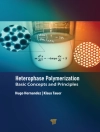Biomedical Applications of Extracellular Vesicles
Unique resource focusing on biomedical applications and clinical translation of extracellular vesicles in science and medicine
Focusing on key points to better understand extracellular vesicles (EVs) and their development, Biomedical Applications of Extracellular Vesicles describes in detail the biogenesis of EVs, the mechanism of intercellular communication, and the treatment of various diseases of EVs and the EV-based drug delivery platforms. An application-oriented resource, the work presents rapidly newer biomedical and clinical applications of natural and engineered EVs such as drug delivery, diagnosis, prognosis monitoring, immunotherapy, and more.
The first part of this book provides a basic background on EVs. Next, the book introduces the excellent therapeutic effects of EVs themselves and the underlying mechanisms, followed by how EVs from different sources were used to construct drug delivery platforms. The latest research on EVs from leading groups around the world is presented.
Sample topics covered in Biomedical Applications of Extracellular Vesicles include:
- Biogenesis of various EVs
- Pros and cons of the different instrumental and methodological developments for analytical strategies applied to EVs
- EVs in treatment of major diseases, such as cancer, cardiovascular and respiratory diseases
- Current methods of engineering EVs, and a comparison of the advantages and disadvantages of each method
- Biomaterials, such as hydrogels, scaffolds, and microneedles, that have been developed to further enhance the therapeutic efficacy of EVs
- Key challenges, such as quality control, scalability, and biosafety, that limit the clinical and industrial translation of EVs
Explaining in detail how extracellular vesicles are produced and engineered, along with potential applications and commercial developments of EVs in science and industry, Biomedical Applications of Extracellular Vesicles is an essential resource on the subject for chemists, cell biologists, and molecular physicists.
Tabela de Conteúdo
Preface xi
1 Extracellular Vesicles and Their Biomedical Applications: An Overview 1
Xing-Jie liang, Ke Cheng, and Zhenhua li
1.1 Introduction 1
1.2 Biogenesis and Composition of Extracellular Vesicles 1
1.3 Biological Functions of Extracellular Vesicles 2
1.4 Extracellular Vesicles Isolation and Limitations 3
2 Biogenesis and Identification of Extracellular Vesicles 5
Dandan Ding, Xing Zhang, Yu Zhao, Xiaoya Li, Qingqing Leng, and Zhenhua li
2.1 Biogenesis of Extracellular Vesicles 5
2.1.1 Biogenesis of Exosome 6
2.1.2 Biogenesis of Microvesicle 8
2.1.3 Biogenesis of Apoptotic Bodies 8
2.1.4 Biogenesis of Large Oncosomes 9
2.2 Identification of Extracellular Vesicles 9
2.2.1 Electron Microscopic Identification 9
2.2.1.1 Scanning Electron Microscopy 9
2.2.1.2 Transmission Electron Microscopy 10
2.2.1.3 Atomic Force Microscopy 11
2.2.1.4 Cryo-Electron Microscopy 12
2.2.2 Particle Size Detection 13
2.2.2.1 Nanoparticle Tracking Analysis 13
2.2.2.2 Dynamic Light Scattering 14
2.2.3 Surface Protein Assay 16
2.2.3.1 Protein Immunoblotting Method 17
2.2.3.2 Nano-Flow Cytometry 19
2.2.3.3 Enzyme-Linked Immunosorbent Assay 19
2.2.4 Other Methods 21
2.2.4.1 Tunable Resistive Pulse Sensing 21
2.2.4.2 Single EV Analysis Technique 22
2.2.4.3 Micronuclear Magnetic Resonance 23
References 24
3 Therapeutic Potential of Extracellular Vesicles from Different Cell Sources 35
Xueyi Wang and Zhenhua li
3.1 Extracellular Vesicles Derived from Stem Cells (SCs) 35
3.1.1 Extracellular Vesicles Derived from Mesenchymal Stem Cells (MSCs) 37
3.1.1.1 Kidney Injury 38
3.1.1.2 Myocardial Ischemia/Reperfusion Injury (MI/RI) 38
3.1.1.3 Spinal Cord Injury (SCI) 39
3.1.1.4 Cancer 40
3.1.2 Extracellular Vesicles Derived from Neural Stem Cells (NSCs) 40
3.1.3 Extracellular Vesicles Derived from Endothelial Progenitor Cells (EPCs) 41
3.1.4 Extracellular Vesicles Derived from Cardiac Progenitor Cells (CPCs) and Other Stem Cells 41
3.2 Extracellular Vesicles Derived from Immune Cells 42
3.2.1 Extracellular Vesicles Derived from Macrophages 42
3.2.2 Extracellular Vesicles Derived from Dendritic Cells (DCs) 44
3.2.3 Extracellular Vesicles Derived from T Cells 45
3.2.4 Extracellular Vesicles Derived from Natural Killer (NK) Cells 46
3.3 Extracellular Vesicles Derived from Cancer Cells 47
3.4 Extracellular Vesicles Derived from Plants 49
3.4.1 Anti-inflammatory 49
3.4.2 Anticancer 50
3.4.3 Antibacterial 51
3.4.4 Antioxidation 51
References 51
4 Biomedical Applications of Extracellular Vesicles in Treatment of Disease 59
Fei Wang, Jiacong Ai, Ziyang Zhang, Yuanhang li, and Zhenhua li
4.1 Tissue Engineering and Regenerative Medicine 60
4.2 Metabolic Diseases 67
4.3 Cardiovascular Diseases 74
4.4 Respiratory Diseases 85
4.5 Cancers 88
4.6 Conclusion and Perspectives 93
References 94
5 Applications of Engineered Extracellular Vesicles 101
Lanya li, Yingxian Xiao, Shushan Mo, and Zhenhua li
5.1 Engineering EVs for Cargo Loading 101
5.1.1 Endogenous Loading 101
5.1.2 Exogenous Loading 104
5.2 Engineering EVs for Surface Modification 106
5.2.1 Genetic Engineering 106
5.2.2 Chemical Modification 108
5.2.3 Hydrophobic Membrane Engineering 109
References 111
6 Current Technology for Production, Isolation, and Quality Control of Extracellular Vesicles 117
Dandan Han, Yichuan Ma, Yujing Hu, and Zhenhua li
6.1 Production of EVs 117
6.1.1 Three-Dimensional Culture 117
6.1.2 Physical Stimulation 119
6.1.3 Chemical Stimulation 120
6.1.4 Physiological Modification 120
6.1.5 Genetic Manipulation 121
6.2 Extraction of EVs 122
6.2.1 Separation Strategies of EVs 123
6.2.2 Ultracentrifugation Approach 123
6.2.2.1 Differential Ultracentrifugation 123
6.2.2.2 Isopycnic and Moving-Zone Density Gradient Ultracentrifugation 125
6.2.3 Ultrafiltration Approach 125
6.2.4 Size-Exclusion Chromatography 127
6.2.5 Polymer Precipitation Strategy 128
6.2.6 Immunoaffinity Capture Approach 128
6.2.7 Microfluidic Technology 129
6.2.8 Other Methods 131
6.3 Quality Control of EVs 132
6.3.1 Transmission Electron Microscopy 133
6.3.2 High-Resolution Liquid Chromatography–Mass Spectrometry 134
6.3.3 Enzyme-Linked Immunosorbent Assay 134
6.3.4 Fourier-Transform Infrared Attenuated Total Reflection Spectroscopy 135
6.3.5 Capillary Electrophoresis 135
6.3.6 Nanoparticles Tracking Analysis 136
6.3.7 Flow Cytometer 137
6.3.8 Other Techniques 138
References 140
7 Prospects and Limitations of Clinical Application of Extracellular Vesicles 147
li Luo, Weirun li, and Zhenhua li
7.1 Application of Exosomes as Liquid Biopsy in Clinical Diagnosis 147
7.2 Exosomes—It has Become a Star Molecule in Disease Diagnosis 147
7.2.1 Exosomes Could Be Used as Prognostic and Diagnostic Biomarkers in Cancer 150
7.2.2 Exosomes Biopsy Strategies were Proposed to Target the Different Cancers 152
7.2.2.1 Pancreatic Cancer 152
7.2.2.2 Gastric Cancer 152
7.2.2.3 Lung Cancer 152
7.2.2.4 Breast Cancer 153
7.2.2.5 Liver Cancer 153
7.2.2.6 Ovarian Cancer 153
7.2.2.7 Melanoma 154
7.2.2.8 Colon Cancer 154
7.2.2.9 Glioma 155
7.2.3 Exosomes in Clinical Trial for Cancer Biopsy 155
7.3 The Commercial Application of Exosomes 158
7.3.1 Tumor Therapy 158
7.3.2 Lung Infection and ARDS Treatment 158
7.3.3 Cardiovascular Disease Treatment 160
7.3.4 Liver and Kidney Injury Treatment 160
7.3.5 Ophthalmology Treatment 160
7.3.6 Cartilage Injury Treatment 161
7.3.7 Other Treatments 161
7.3.8 Engineering of Exosome Delivery 161
7.3.9 Skin Repair and Medical Skincare Products 164
7.4 Commercial Development of Exosomes 166
7.4.1 Analysis of Representative Companies of Exosomes 168
7.4.1.1 Exo Co Bio 168
7.4.1.2 Direct Biologics 168
7.4.1.3 Tianjin Exocrine Science and Technology 169
7.4.1.4 Thera Xyte 170
7.4.1.5 Exosome Diagnostics 170
7.4.1.6 Codiak 171
7.4.1.7 Evox 171
7.4.1.8 EVer Zom 171
7.5 Issues and Challenges 172
7.5.1 Quality Control 172
7.5.2 Storage Stability 172
7.5.3 Product Safety 173
7.5.4 Drug-Forming Properties of Engineered Exosomes 173
References 174
8 Conclusion and Future Perspectives 181
Xing-Jie liang, Ke Cheng, and Zhenhua li
8.1 Summary and Conclusions 181
8.2 General Trends and Developments 182
8.2.1 EVs in Drug Delivery 182
8.2.2 Engineered EVs in Biomedical Applications 183
8.2.3 EVs for Clinical Applications When Comparing with Liposomes 184
8.3 Challenges for Future Research 185
8.3.1 Standardization and Quality Control 185
8.3.2 Scalability and Manufacturing 185
8.3.3 Targeting and Biodistribution 186
8.3.4 Safety and Toxicity 186
8.3.5 Regulatory Challenges 186
8.3.6 Heterogeneity of EV Populations 187
8.3.7 Understanding the Role of EVs in Disease Progression and Development 187
Index 189
Sobre o autor
Dr. Zhenhua Li is Professor at Southern Medical University, China. He serves as an editorial board member of Extracellular Vesicle, Exploration, Materials Today Bio.
Dr. Xing-Jie Liang is Deputy Director of Key Laboratory for Biomedical Effects of Nanomaterials and Nanosafety, Chinese Academy of Sciences.
Dr. Ke Cheng is a Professor of Biomedical Engineering at Columbia University.












